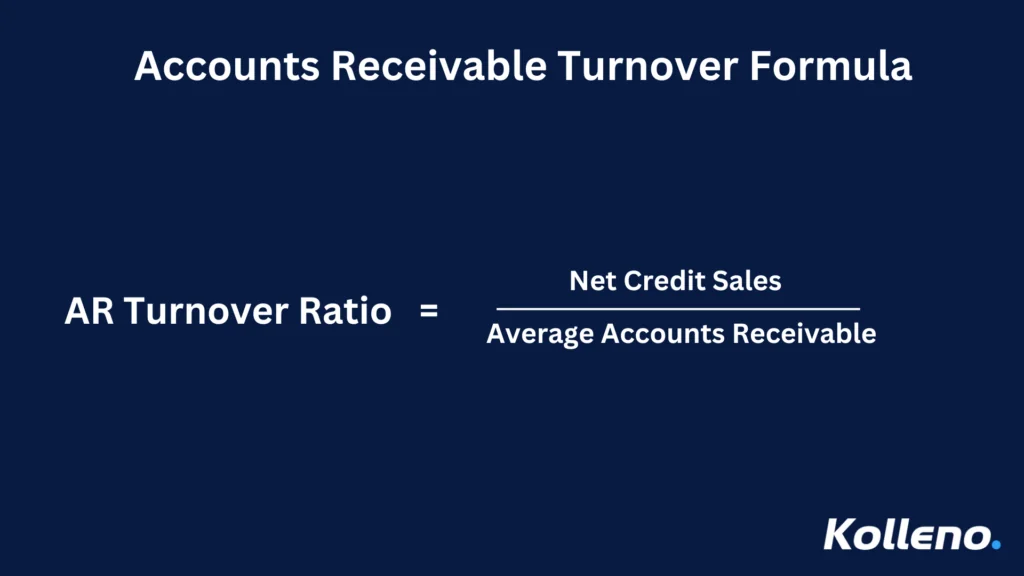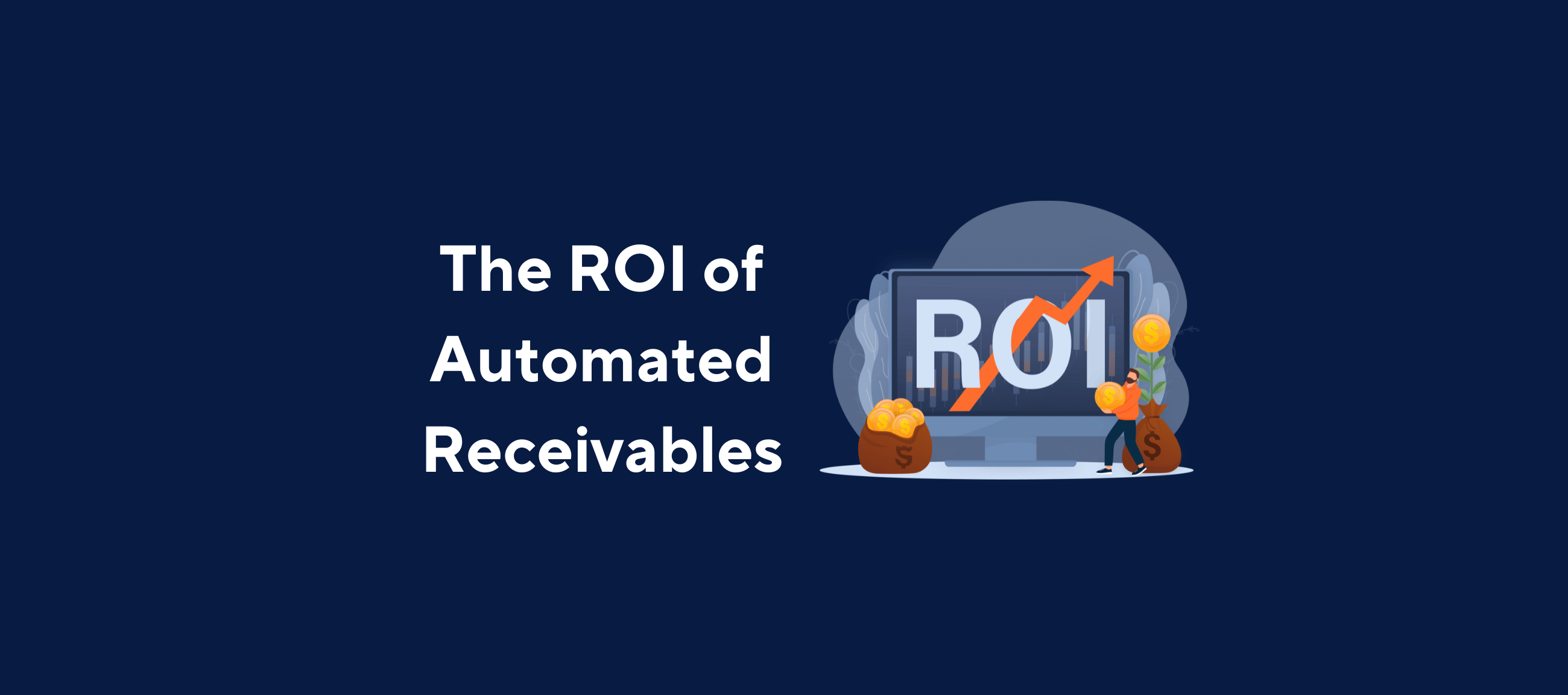What is Accounts Receivable Turnover?
In the majority of cases, the most effective way for businesses to avoid losses from bad debts is to ensure the quick turnover of their accounts receivable. On that note, accounts receivable turnover, also known as the debtor’s turnover ratio, is a metric often employed by accountants and business analysts to determine how efficient a company is at redeeming the credit that they have extended to its customers/clients.
In addition, the accounts receivable turnover ratio is an essential component in financial modelling, whereby any assumptions surrounding its figure have a notable impact on the company’s forecasted balance sheet.
Mathematically speaking, accounts receivable turnover is described as a financial ratio of net credit sales of a company within a specific accounting period divided by the number of times a company converts its average accounts receivable into cash within that identical period (usually on an annual basis).
Accounts Receivable Turnover Formula
The Accounts Receivable Turnover Ratio is a key financial metric that measures how efficiently a company collects payments from its customers. Using the receivable turnover ratio formula indicates how many times, on average, a company collects its accounts receivable during a given period.

Calculation Steps
1. Calculate Average Accounts Receivable: Average Accounts Receivable = (Beginning AR + Ending AR) ÷ 2
2. Determine Net Credit Sales: Net Credit Sales = Total Credit Sales – (Sales Returns + Sales Allowances)
3. Compute Accounts Receivable Turnover Ratio: AR Turnover Ratio = Net Credit Sales ÷ Average Accounts Receivable
Example Calculation
Let’s illustrate this with a practical example:
- Beginning Accounts Receivable: £300,000
- Ending Accounts Receivable: £500,000
- Net Credit Sales: £2,000,000
Step 1: Average Accounts Receivable – (£300,000 + £500,000) ÷ 2 = £400,000
Step 2: AR Turnover Ratio – £2,000,000 ÷ £400,000 = 5
Interpretation
In this example, the Accounts Receivable Turnover Ratio is 5, meaning the company collected its average accounts receivable 5 times during the period. A high AR turnover ratio generally indicates more efficient collection of credit sales, while a low ratio might suggest potential issues with collection practices or customer credit policies.
Key Points
- A higher turnover ratio is usually preferable, indicating quicker collection of receivables.
- However, an extremely high ratio might suggest overly strict credit policies that could be limiting sales.
- This ratio should be compared to industry standards and the company’s historical performance for meaningful insights.
- The ratio can be used to calculate the average collection period: (365 days ÷ AR Turnover Ratio).
By analysing this ratio alongside other financial metrics, businesses can gain valuable insights into their cash flow management and overall financial health.
What Would Be Considered a Good Accounts Receivable Turnover Ratio?
In essence, the higher the accounts receivable turnover of a company, the greater its efficiency at debt collection, which equates to the company’s ability to convert its credits to cash frequently. Besides that, a high accounts receivable ratio also signals that the company’s accounts receivable are most likely to be fully recovered from its customers and, thereby, a high-quality customer base. This, in turn, indicates that there is less risk for the business as they have funds coming in to cover the company’s expenses. Consequently, such values may have a direct impact on a company’s ability to apply for bank loans successfully.
Meanwhile, as the accounts receivable turnover has an inverse relationship with the number of days in accounts receivable, analysts could also postulate that the company employs a conservative credit policy based on its high accounts receivable turnover ratio.
On the contrary, a lower accounts receivable turnover ratio indicates that the firm’s customer debt collection procedure is problematic, whereby possible sources of this issue may include the company having over-extended its credit terms and/or serving customers who are not trustworthy. In addition, a low accounts receivable turnover ratio may suggest that the company faces tough competition, resulting in the management team providing prolonged credit terms to bring in additional sales. Nevertheless, based on the time value of money principle, companies will be effectively losing money if it takes a longer duration to settle their invoices, so a low or decreasing accounts receivable turnover ratio can be interpreted as a red flag worth investigating.
Overall, business analysts are highly recommended to compare a company’s accounts receivable turnover ratio with its direct and indirect competitors to obtain meaningful insights instead of viewing the number in isolation. As an example, a business reporting an accounts receivable turnover ratio of three may be considered excellent if the mean ratio figure for the industry it is operating in is two.
What Can Businesses Interpret from Their Accounts Receivable Turnover Value?
All in all, the accounts receivable turnover ratio offers some degree of indication of a firm’s financial and operational prowess as it offers a snapshot of the business’s cash flow state. In most cases, corporations can take between 30 and 60 days to convert their sales into cash. In particular, this timeframe is standard when the company utilises traditional cash application methods such as issuing invoices and contacting customers for payment collection. Nonetheless, companies can still shorten this duration drastically by getting their customers to pay upon delivering their products and/or services.
On that note, the objective of tracking this financial metric is to determine the number of times the business is successful at collecting its debts punctually, which in turn can guide the management to decide on whether specific customers ought to have a shortened credit period or deploy a more aggressive customer debt collection effort firm-wide instead.
Meanwhile, the accounts receivable turnover ratio has been observed to increase significantly as a result of various technological advances over recent years. In particular, these technological innovations have enabled customers to make cross-border purchases without incurring additional charges. Furthermore, automating the accounts receivable management has also been a strategic component in streamlining the entire cash application process.
To address this, Kolleno is a software extension enabling accounting professionals to automate the accounts receivable management, thanks to integrating with accounting software such as Xero or QuickBooks. Essentially, Kolleno’s all-in-one accounts receivable software will not only put an end to manual accounting tasks but also elevate your finance department’s overall productivity for the better!
The Limitations of Tracking Accounts Receivable Turnover Ratios
Just like any other financial metric that attempts to measure a company’s efficiency in running its business operations, the accounts receivable turnover ratio comes with specific limitations that investors need to bear in mind.
Certain companies employ total sales as opposed to net sales when calculating their accounts receivable turnover ratios. This subsequently skews the result, as this approach will make the firm’s turnover ratio appear higher. Therefore, it is extremely important for investors to have a clear understanding of how the ratio is calculated when reviewing a company’s financial statements.
How Can Businesses Optimise Their Accounts Receivable Turnover Ratios?
Put simply, optimising the accounts receivable turnover rate is one of the secret sauces for a company to improve its cash flow. In essence, businesses with a higher turnover ratio have a more stable cash flow and better credit ratings compared to those with lower turnover rates.
With that, there are a number of strategies which firms can adopt to increase their accounts receivable turnover ratios:
Deliver Accurate Invoices Punctually and Frequently
As a general rule of thumb, the more precise and accurate a business’ invoices are, the more straightforward it would be for its customers to settle their unpaid invoices. Consequently, punctual customer billings will aid the company in recovering its debts sooner. In most cases, businesses would typically establish a payment system to allow their customers to pay smaller but consistent bills instead of larger check sizes for a more extended period.
Nurture Tight-Knit Customer Relationships
Building solid relationships with customers is always considered a best practice to help companies be paid on time, as happy customers would be more than willing to pay for the products and/or services punctually. In addition, corporations can also implement practices such as making friendly calls or sending gentle reminder emails to check in with their customers. These gestures, in turn, could make a big difference in the time taken to close unsettled invoices.
Make Sure That Payments Terms Are Specified Clearly in The Invoice
Having explicit and straightforward payment terms on the invoices helps to set the company up for success in increasing its accounts receivable turnover ratio. For instance, it is a good practice to document the company’s expectation for the customer to make their payment within 30 days of delivering the goods and/or service. Should it be necessary, businesses can also consider including penalties for any late payments, in which the late payment fees are typically a percentage of the original invoice amount. Other than that, the management team ought to also set certain credit limits or provide premium payment plans for the company’s high-value and high-quality customers to incentivise punctual payments.
Employ Cloud-Based Accounting Software to Digitalise the Procedure
Generally speaking, companies are strongly recommended to consider subscribing to cloud-based accounting software to simplify the entire internal billing and accounts receivable procedure. To briefly elaborate, working on the cloud permits the management team to access the business’ financial data from any location and collaborate with the firm’s bookkeeping and accounting team in a more efficient manner. Moreover, utilising cloud-based accounting software enables the company to monitor its cash application process, and cash flow performance, as well as automate the delivery of invoices and payment reminders to the relevant customers.
An excellent example of such software would include Kolleno, whereby its accounts receivable, credit control, as well as debt collection solutions can help customers save a significant amount of time in accounts receivable management and speed up customer payment collections.
Simplify the Entire Customer Payment Process
By creating multiple ways for customers to settle their invoices, companies will thereby have a higher chance of getting paid faster. Examples of such strategies would include the firm accepting digital payment options (such as via PayPal, Square, Stripe, or Apple Pay) together with traditional payment approaches, including the likes of cash and paper-based checks.
Avoid Having Accounts Receivable Entirely
In an ideal (but unrealistic) scenario, the optimal approach for businesses to minimise their cash flow risks is not to have any accounts receivable at all. However, this may no longer be possible as numerous industries either have or are beginning to become comfortable with accepting pre-payments prior to delivering their goods and/or services. This is especially the case with business-to-business (B2B) clients, where almost no clients will be paying on the spot. When companies make a sale, they would agree to send an invoice. Thus, while an invoice is pending, the owed amount will be recorded as an account receivable on the company’s balance sheet.
Concluding Thoughts
In a nutshell, a management team’s ability to optimise the company’s accounts receivable turnover ratio could result in the business being able to save a large sum of money in the long term. On that note, the bottom line is that tracking the accounts receivable turnover ratio is a vital component of maintaining a healthy cash flow for the business, so it is imperative to invest the necessary resources and time into understanding the various factors influencing the final figure.
Summary of Key Points:
The accounts receivable turnover measures the number of times a business is able to convert its outstanding accounts receivables to cash within a certain period. Such durations are often measured on a monthly, quarterly, or annual basis.
Calculating the company’s accounts receivable turnover is a critical financial metric to assess how soon a business can recover the money it is owed by its customers/clients after having delivered its products and/or services upfront.
The accounts receivables turnover ratio is typically expressed as the net credit sales divided by the average accounts receivable balance during the specified period.
Companies generally aim for a high accounts receivable turnover ratio as it indicates an efficient debt collection procedure employed by the firm. On the other hand, a low accounts receivable turnover ratio suggests the management team’s incompetency in collecting its customer’s payments punctually.
Developing solid cash flow management strategies is vital for all companies if they seek to maintain a healthy cash position. Such strategies may include executing an effective debt collection procedure or conducting proper credit checks on the customers before agreeing to serve them.
In essence, when a business is able to manage its accounts receivables effectively, its cash flow becomes increasingly stable and predictable. As a result, expenses associated with accounts receivable will be lowered, thereby increasing the balance sheet’s health. This, in turn, is a very crucial factor for companies when they are applying for bank loans, reinvesting capital into their business operations, or attempting to attract third-party investors.
To help corporations achieve these objectives, Kolleno is a smart credit control platform that can help companies increase their accounts receivable turnover ratios by automating their cash application procedures.
Frequently Asked Questions (FAQs)
What Is the Accounts Receivable Turnover Ratio?
The accounts receivable turnover ratio is a financial ratio that is used to evaluate how efficient a business is at collecting payments from customers with unsettled invoices. The average accounts receivables turnover ratio varies significantly across industries.
What Does a High Accounts Receivable Turnover Ratio Indicate?
Having a high accounts receivable turnover ratio may suggest that a business has an efficient debt collection process and/or a high-quality customer base that can settle its debts quickly. Meanwhile, a high turnover ratio could also be indicative of a company that predominantly operates on a cash basis.
What Is Considered a Good Accounts Receivable Turnover Ratio?
A good accounts receivable turnover ratio varies significantly depending on the industry that the company is operating in. Moreover, some giant corporations might be more willing to provide extended credit periods to their customers because they are less dependent on credit sales for their business operations.
- What is Accounts Receivable Turnover?
- Accounts Receivable Turnover Formula
- What Would Be Considered a Good Accounts Receivable Turnover Ratio?
- What Can Businesses Interpret from Their Accounts Receivable Turnover Value?
- The Limitations of Tracking Accounts Receivable Turnover Ratios
- How Can Businesses Optimise Their Accounts Receivable Turnover Ratios?
- Deliver Accurate Invoices Punctually and Frequently
- Nurture Tight-Knit Customer Relationships
- Make Sure That Payments Terms Are Specified Clearly in The Invoice
- Employ Cloud-Based Accounting Software to Digitalise the Procedure
- Simplify the Entire Customer Payment Process
- Avoid Having Accounts Receivable Entirely
- Concluding Thoughts
- Summary of Key Points:
- Frequently Asked Questions (FAQs)





